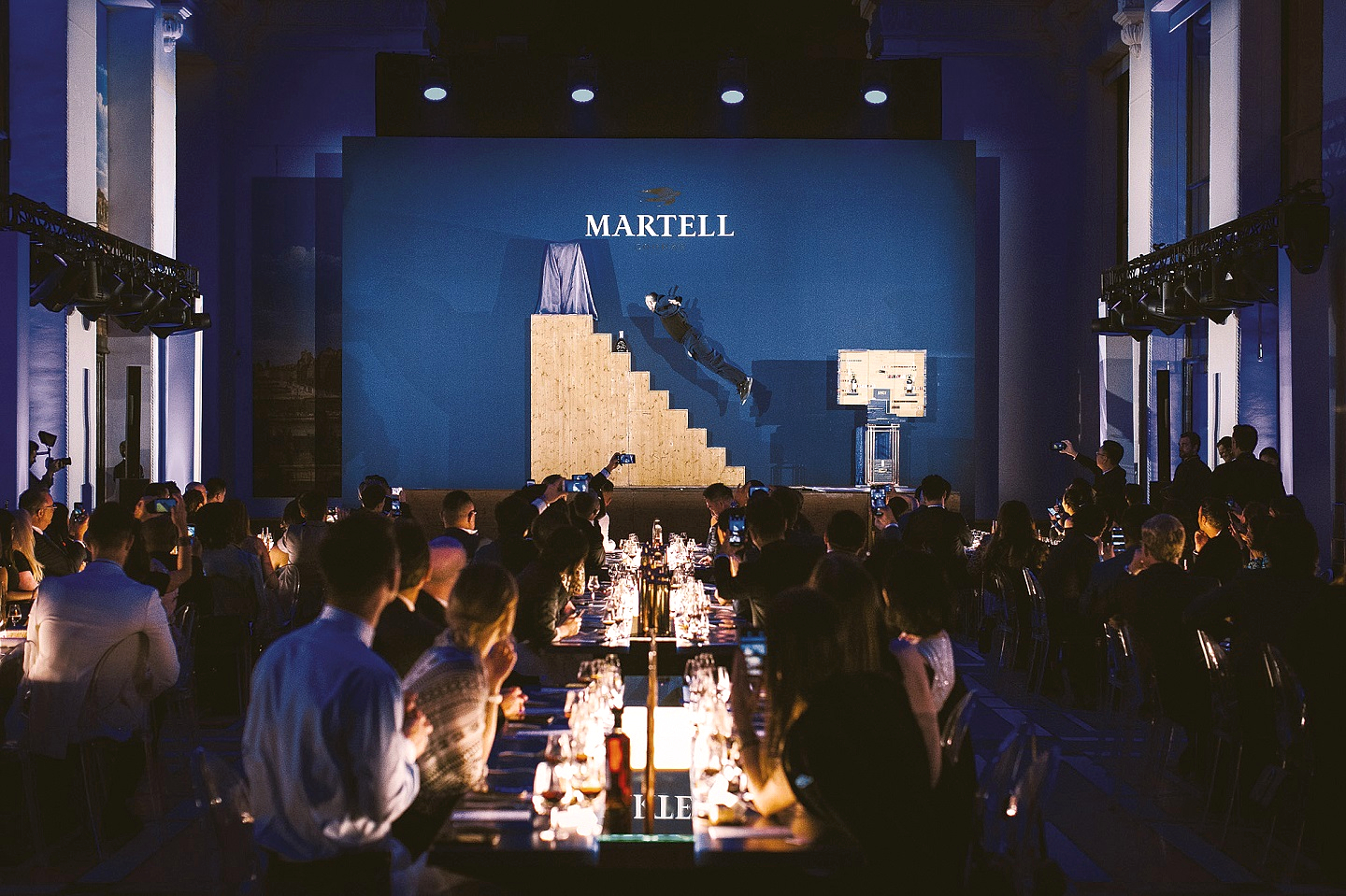
Yoann Bourgeois' gravity-defying trampoline performance heralded the launch of the Martell Chanteloup XXO (All photos: Martell)
There is almost nothing like Paris at the golden hour. When the sun begins to sink on the horizon, its last rays turn the numerous gilded domes and gates of the French capital into liquid fire, a burnished mirage amid the tree-lined boulevards. It is like a lifesaver thrown into a sea of descending darkness, a final burst of light before night takes over and Paris slips on the nocturnal ensemble it wears so well.
However, Cognac could give the capital city a run for its money in picturesqueness. Of course, the two are worlds apart, the latter a hive of art and activity and the former where the proliferation of grapevines does not refer to an extensive rumour mill. One of the best ways to take in the quaint commune of Cognac is from Indigo by Martell, the rooftop bar of the Gâtebourse Tower that marks the premises owned by the cognac maker.
terrace_bar.jpg
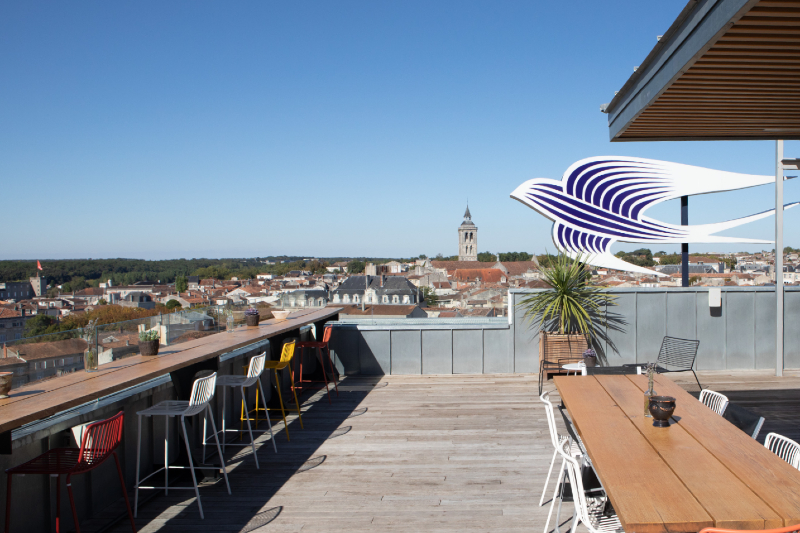
Every corner of the open terrace bar proffers spectacular views of the historic town centre, from the eclectic rooftops to the banks of Charente River. The bar is named after one of the earliest products traded by Jean Martell when the young American merchant from Jersey, one of the Channel Islands, arrived in France in 1715. Inspired by his surroundings, he devoted himself to the study and development of cognac, travelling the region in search of the finest eaux-de-vie and building relationships with local wine-growers that would last generations. Today, the colour indigo evokes the trademark hue of Martell and the oceans across which the house has travelled in its global export of fine cognac.
We spend an afternoon drinking in the panoramic beauty and the open bar. Fittingly, I have my first sip of L’Or de Jean Martell here, that extravagant pinnacle of excellence made from 400 rare eaux-de-vie, some over a century old. With that lingering on the palate, we descend from Indigo to the adjacent visitor centre for a tour of Martell’s legacy.
Arrival to a dramatic flourish
Despite the inopportune strikes by British Airways staff, we arrive in Paris just in time for part one of our French sojourn: the launch of an exceptional label by Pernod Ricard. At the Le Petit Palais (small palace) on Avenue Winston Churchill in the trendy 8th arrondissement, a bar is set up in the middle of the tropical garden in the courtyard to serve sassy cocktails, such as the fruity Peach Don’t Kill My Vibe. Waiters bearing hors d’oeuvres circulate around the well-heeled crowd as a pianist ushers in dusk with contemporary tunes.
le_petit_palais.jpg
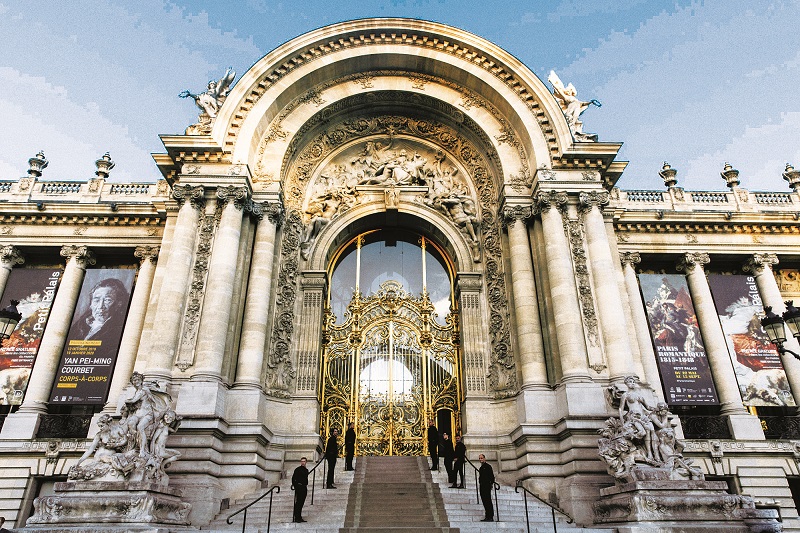
Dinner is served beneath the frescoes and paintings within the fine art museum. Guy Savoy, whose eponymous Parisian restaurant holds three Michelin stars, designed a five-course menu in keeping with the interlaced values of French cuisine and those of Martell. The starter of crab and avocado with citrus fruit jelly and earthy carpaccio of ceps with woodland flavours are paired with the Martell Borderies 1977 and Grande Champagne 1958 respectively. The three final courses — guinea fowl three ways, oolong tea sorbet with spiced custard cream and the marvel that is a layered chocolate fondant with praline — are accompanied by the cognac we are here to welcome.
As far as launches go, this is everything Martell stands for: understated and elegant, well-thought-out in concept and first rate in execution. Traditional oil and watercolour masterpieces look on as a different sort of art takes place onstage. Acrobat and choreographer Yoann Bourgeois nonchalantly defies gravity in a trampoline performance, attempting to climb a staircase to reach a veiled construction at the top only to fall off each step and dramatically bounce back up to land neatly on the step, a living Instagram Boomerang effect. He finally reaches the top and pulls aside silk veils to reveal an exquisite made-to-order trunk guarding the new Martell Chanteloup XXO.
martell_chanteloup_xxo.jpg
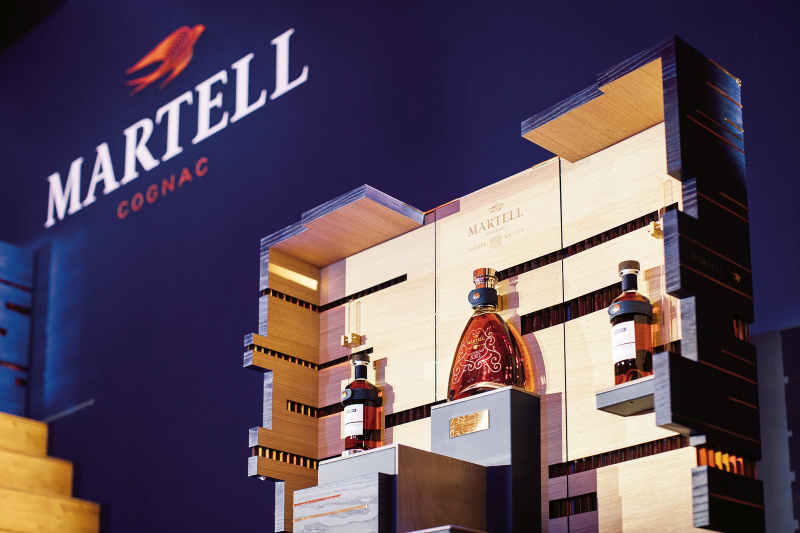
A staggering 450 eaux-de-vie went into this extra, extra old blend, the youngest a respectable 14 years old. They were selected from the finest crus or estates in Cognac: the Borderies, Grande Champagne, Petite Champagne and Fins Bois. The result is an amber nectar with swirls of honey, vine peach, apricot, fig and almonds on the nose that give way to a long, intense and full-bodied swallow of rich fruit. In the pairing menu, it segues easily from savoury main course to dessert and digestif.
Striking gold
The next day, we board a train from Paris to Angoulême and then a bus to Cognac. The scenery whirls by — fields of golden wheat giving way to cobblestoned streets and old-world stone houses. Fortified by lunch and copious amounts of cognac at Indigo under the guise of acquainting ourselves with the illustrious brand, we begin our true understanding of Martell at its visitor centre.
Martell the Journey is a fairly new experience, opened earlier this year to offer an interactive and immersive look at the brand. It sits on a historical site, as do most things in Cognac, with its oldest structures dating back to the 18th century. The cool and dark limestone constructions, immune to the unforgiving summer’s heat, infuse a sense of labyrinthine discovery as the visitor trawls through the Heritage, Savoir Faire and Part Des Anges wings.
martell_lifestyle_02_0_0.jpg
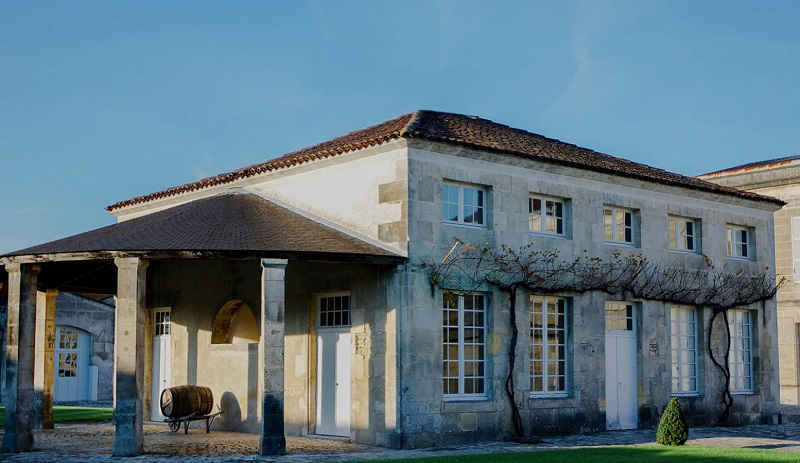
Like most good stories, we start at the beginning with the Heritage section, where the Martell family’s tale of romance and fortitude is religiously documented. The maison’s history naturally begins with Jean Martell’s intrepid journey to Europe and the start of a premium obsession. Upon his passing in 1753, his widow Rachel vowed to uphold his dream, a Sisyphean task given her gender in a man’s world, but one she performed with aplomb. Twenty years later, she passed on a substantial legacy to their sons, Jean and Frédéric, who oversaw the first shipment of cognac to the US.
That was just kindling for the fire that would see the family name travel worldwide, sought after by royalty and gracing milestone occasions. Martell cognac would be served at the coronation of King George V of England (1911), during the signing of the World War I armistice in Compiègne, France (1918), and at the wedding dinner of Prince Rainier of Monaco to film star Grace Kelly (1956). It would also go on adventures: the maiden voyage of Queen Mary, the world’s most luxurious transatlantic liner (1936), a polar expedition by famous explorer Paul-Emile Victor (1956) and on a Concorde flight from Paris to New York at twice the speed of sound (1977).
savoir_faire.jpg

The house’s expertise in cognac is depicted in the long and low-slung Savoir Faire building, from its 200ha of grapes to the 1,200 winegrowers it works with. Interactive displays include a map of the wine-growing regions of Cognac and ageing and distillation processes. “At Martell, we have a peculiarity,” says our guide. “The cellar master is not appointed but elected by his peers. This means he is acknowledged by the group as the best at what he does.”
Part Des Anges translates to “the part of the angels”. In this wing, the enjoyment of cognac is exalted — from the stemware used in its consumption to a virtual quiz that matches your personality with a cocktail. This room seems darker than the previous two, and a close look at the walls shows them to be coated in a creeping black fuzz — a fungus, we are told, that used to identify undeclared or illicit cognac cellars in the olden days.
This black beauty, for it is strangely endearing, is the torula compniacensis that covers the walls and roofs where cognac sleeps. After distillation, the eaux-de-vie, which forms the base of cognac, begins a long ageing period in oak casks stored in dark and humid cellars. As cognac and wood grow into each other, the latter infusing its aroma, flavour and colour into the former, the porosity of the barrels means an average of 2% of the total volume of alcohol per year evaporates during the ageing. Dubbed part des anges or angel’s share — conjuring the charming image of a tipsy cherub — the ethanol vapours are used by this black fungus as food as well as to stimulate spore germination and accelerate the colonisation of their habitats.
marriage_shed.jpg
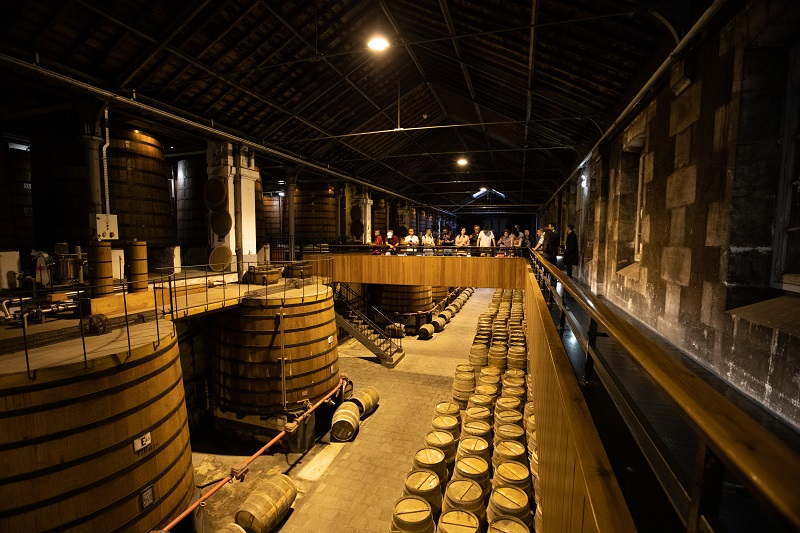
We go on to the Marriage shed — two storeys of massive 350-litre barrels or vats standing like silent, swollen sentries in neat rows. Our voices automatically lower to whispers in this hallowed hall where the eaux-de-vie sleep. We hear about the filtration and bottling processes, as well as the facility’s strategic location near Charente River that flows into the Atlantic Ocean, thus forming the commercial vector of the region.
Sufficiently impressed, it is only logical that we then taste the stuff itself. Martell’s brand new tasting room is an ultra-cool amalgamation of modernity and tradition, a well-lit aquarium in the middle of a cellar, vats atmospherically lining the walls. We touch these with reverence, even sampling a couple of ageing eaux-de-vie, before proceeding to the all-glass tasting room to blend and bottle our own cognac. This is one stoppered carafe we could never put a price on.
May the sun never set here
Dinner is at the Château de Chanteloup, the soul of Martell and home to several generations of the family from 1838 onwards. They still gather here to celebrate landmark events as well as receive and host important friends. History is literally written on the walls, with documents, photographs and artwork related to the family tastefully displayed around the stately home — from the ornate wallpapered study to the bedrooms up a sweeping staircase. A bunker on the grounds acts as a cellar, holding some of their most precious eaux-de-vie. The silhouettes of the stacked barrels are faintly visible in the dark, enhanced by the heady aroma of fruit and alcohol.
chateau_de_chanteloup.jpg
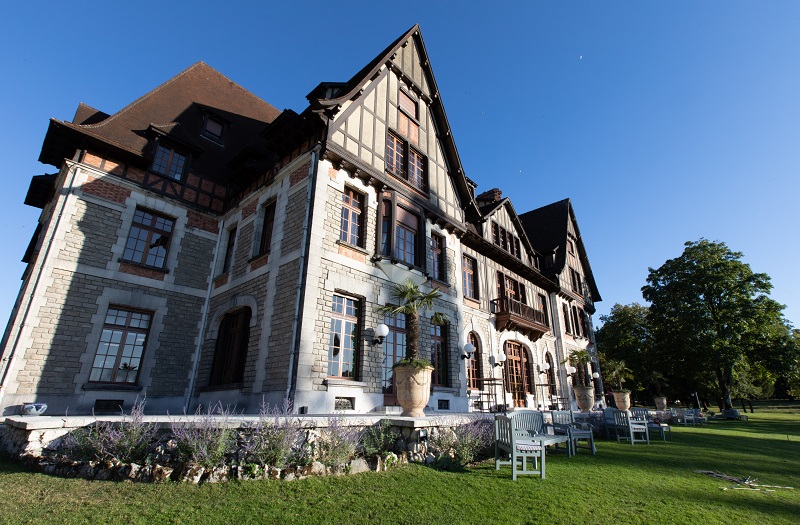
All this is remarkable, but most memorable is the estate itself. The sprawling grounds are home to numerous wildlife, including docile deer who come right up to the door, their noses quivering inquisitively. A glorious sunset forms the ideal backdrop for photographs and those of us not busy with our cameras are content to soak in the serenity of the scene with champagne and rich terrine. And in this expanse of silent, natural beauty, Martell’s ambitions and values fall into place.
Its spirit is one of generous emotions and how could it not be when fortified by everything the family has experienced and pursued? Generations have dedicated themselves to upholding and magnifying this proud legacy, propelled by a vision of excellence to get where they are now. In every bottle, such as the Chanteloup XXO, is the entirety of its know-how and artistry, a tangible heritage that marks Martell’s influence in the industry. From grapes, barrels and black fungus, gold nectar grows. So too does an enduring family story.
This article first appeared on Jan 13, 2020 in The Edge Malaysia.


